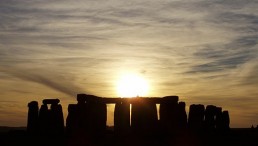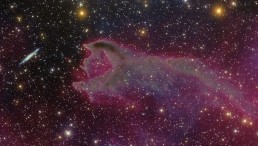Large carnivorous dinosaurs were the apex predators during the Mesozoic era, but research suggests that juvenile carnivores like the T-Rex shaped community structures and ecological diversity to their advantage.
Modern carnivorous communities often include species with a diverse range of body sizes. From the small mongooses to the large lions, there are predatory species of different sizes that help balance the ecology of their community. This also reflects the availability of prey sources that suit each group.
However, megatharopods, large bi-pedal carnivores such as the Tyrannosaurus, Daspletosaurus, and Allosaurus weren't instantly the apex predators of the ecological space they belonged in. Like most dinosaurs, these large reptiles hatched from eggs and as they transitioned to adulthood, research shows that their juvenile periods were vital in their ecological reckoning.
Studying How Juvenile Megatheropods Dominated their Ecological Community
A research paper published in the journal Science entitled "The Influence of Juvenile Dinosaurs on Community Structure and Diversity" suggests that as megatheropods aged and grew, they competed with other predatory species for resources. This, in turn, resulted in the lack of ecological diversity in the immediate community.
Katlin Schroeder, the lead author and a Ph.D. candidate at the University of New Mexico proposes to name the phenomenon, "morphospecies," describing how megatheropods, as they grow and mature, changed their hunting habits by taking the role of multiple species within the ecology of their surroundings.
Schroeder explains that the team wanted to test whether dinosaurs like the T-rex would take on the role of multiple species as it grew, thereby limiting the number of species that could co-exist within the community.
The published study confirms that as megatheropods took on the role of multiple species in the community, they managed to squeeze out competitors, resulting in the T-rex' domination of multiple ecological niches and a striking lack of species diversity during the entire Mesozoic era.
ALSO READ: Skull of Prehistoric Giant Sloth Unearthed by South American Scientists
Carnivores in the Mesozoic Era
The study gives insight into the lack of species diversity during all three periods of the Mesozoic: The Jurrasic, Triassic, and Cretaceous. Fossil records have shown that megatheropods, weighing more than 2,200 pounds were prolific. However, mesocarnivores or medium-sized carnivores are a surprisingly rare sighting.
This odd phenomenon in ecology stunned ecologists. In the modern setting, this would be as if only lions and bears existed, and smaller carnivores such as civets, weasels, coyotes, and wolves did not exist.
Steve Brusatte, a paleontologist from the University of Edinburgh who was not involved in the study says that the phenomenon was a consistent pattern dinosaur in the Cretaceous era exhibited towards the end of their reign.
Results of Shroeder's study showed that mesocarnivores were largely absent in ecological communities ruled by megatheropods regardless of geographic location or time period. The ecological gap was mostly seen during the Cretaceous era where megatheropods were most prolific.
RELATED ARTICLE: Fossilized Bony Lungs of Ancient Fish Reveals It Is as Big as Great White Shark
Check out more news and information on Paleontology on Science Times.




![Anger Could Lead to Blood Vessel Dysfunction, Increase Risk of Heart Problems [Study]](https://1721181113.rsc.cdn77.org/data/thumbs/full/53500/89/56/50/40/anger-could-lead-to-blood-vessel-dysfunction-increase-risk-of-heart-problems-study.jpg)








![Venus Lost Water and Dried Out Due to Chemical Reaction HCO+ Dissociative Recombination [Study]](https://1721181113.rsc.cdn77.org/data/thumbs/full/53493/258/146/50/40/venus-lost-water-and-dried-out-due-to-chemical-reaction-hco-dissociative-recombination-study.jpeg)
